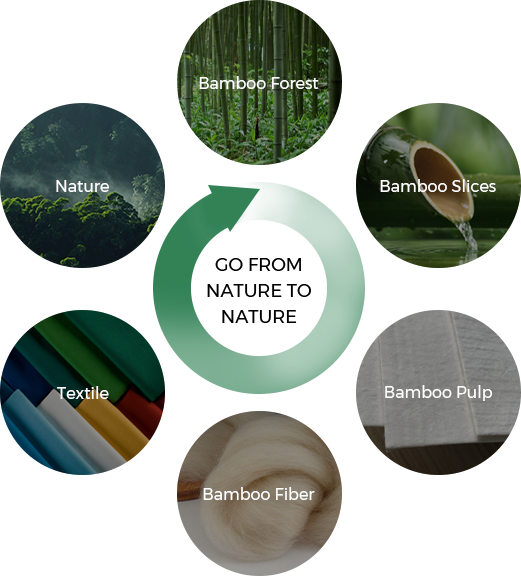Product Category
Since underwear and undergarments are garments that are directly fitted to the body, the fabric's comfort, breathability, moisture wicking capacity, elasticity, etc., are crucial. To ensure that every fabric is soft and comfortable, breathable and moisture-absorbent, and can stretch easily, offering you with a high-quality wearing experience, we carefully choose premium materials certified by fsc, Oeko-Tex100, OCS, GOTS, etc.

Tianhong Story

Organic Bamboo Pioneers
We are dedicated to creating more than 90% organic products by 2030, and we are one of the first manufacturers in the world to adopt the organic bamboo OCS label.

Environmental-Friendly
We adhere to the OEKO-TEX 100 standard in our raw material procurement and fabric production processes. Our primary fabric products have obtained the OEKO-TEX 100 certification.

Dope Dyeing
Tianhong ensures that over 40% of the fabrics in production use the dope dyeing process. Compared to conventional methods, this process saves an average of 60 tons of water per ton of fabric, reduces dye and auxiliary agent usage by 150 kg, and cuts down carbon dioxide emissions by approximately 750 kg.


Ecological System of Circulation
To guarantee that our goods fulfill sustainable, environmentally friendly, and biodegradable standards, we are devoted to designing, producing, and using raw materials that meet professional certification criteria, including but not limited to fsc, OCS, OEKO-TEX 100, and other certifications. One of the essential raw materials is bamboo fiber, which is among the various eco-friendly materials we use.
Bamboo fiber, a cellulose fiber that is renewable, serves as our primary source of raw materials. Fast-growing bamboo has a far shorter growth cycle than conventional wood raw materials. Since bamboo grows more quickly than it can be harvested, we can periodically harvest it without harming the environment.
The root structure of bamboo also contributes to soil stability, water resource preservation, and soil erosion prevention. This helps protect the natural ecosystem.
Latest Updates
Provide you with the latest enterprise and industry news
We are excited to share that Tianhong has been awarded the prestigious "High-Tech Enterprise" certificate by the governm...
We are thrilled to announce that Tianhong has been honored with the 2023 Annual Innovation Development Prize by Tanbooce...
Tianhong Textile is thrilled to have participated as a key exhibitor at the 2023 CHINA CLOTHING TEXTILE ACCESSORIES EXP...
With the continuous advancement of science and technology, the field of textile materials is also constantly innovating ...